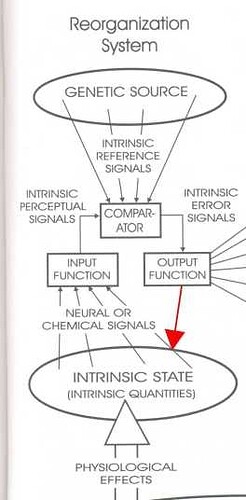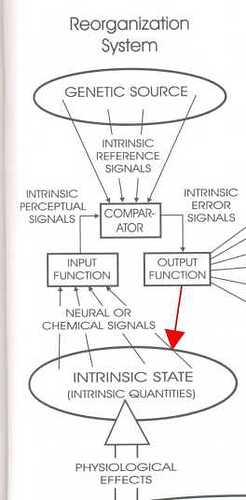[From Bill Powers (2009.08.20.0750 MDT)]
B_H : But before I start, I’d
like to clear misunderstanding abouthomeostasis. It was my mistake, because I didn’t write it down as it
appearsin the latest editions of physiological books. So "the term
homeostasis isused by physiologist to mean maintenance of nearly constant conditions
inthe internal environment. Essentially all organs and tissues of the
bodyperform functions that help maintain these constant conditions". All
otherimplication of this definition can be found in many physiological books
from1960 to 2009. It’s everything there and much more precise, then we
couldever describe it here. So I think at this time, it would be a loss of
spacetalking about that.
How does this “maintenance of almost constant conditions” work?
Is it just through the operation of different organs and tissues without
any control systems? Biologists have been very resistant to the idea of
control systems – it’s hard to understand why. The books may say that
this constancy of conditions just happens, open loop. If so, I think they
are wrong. All the evidence I have seen is that the “constancy”
is only approximate, and there are many instances of homeostasis in which
the whole control loop is well known. How can the books ignore these
things?
Boris, there are just as many misunderstandings in the old posts you
quoted as in the later ones. Also, my ideas are changing right now, so
many of the things I said before might not apply any more. It’s better to
focus on present time and try for clear communciation. Otherwise I’ll be
trying to explain what I meant in the previous posts when I’m not even
sure I mean the same thing any more.
Here is what I see as the missing connection; I drew it in red on a copy
of Fig. 14.1. (which is also attached).
When drawn this way, it’s clear that the control system in the center is
a homeostatic control system that maintains some aspect of intrinsic
state close to a specific reference level determined by a reference
signal that comes from a genetic source. For example, if the input
function senses temperature inside the body, this system would generate
signals that are output (via the red arrow) to the body and would vary
physiological processes to keep the sensed temperature at a genetically
specified reference level. Signals from the red arrow would cause things
like vasoconstriction or vasodilation, changes in metabolic rate,
shivering or sweating, and so on through the list of ways the body can
affect its own temperature without instructions from the hierarchy of
behavioral systems.
This is my explanation of HOW the organs and tissues manage to maintain
approximately constant conditions inside the body.
Note that it would make no sense to draw an arrow from “genetic
source” to “intrinsic state,” bypassing all the functions
of the control system. There would be no control of anything –
disturbances coming in from below in the diagram would not be resisted.
The genetic source would have no way of knowing that a disturbance had
occurred.
The easiest way to alter this diagram to show what you mean is to use the
Paint program on a copy of the file.
Best,
Bill P.
···
At 06:52 AM 8/20/2009 -0500, Boris Hartman wrote:

